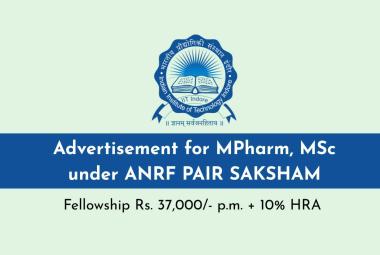ABOUT AUTHOR:
Verma Siddharth
Sri Ram Institute of Technology,
ITI Jabalpur M.P. 482003
luckyverma84@gmail.com
ABSTRACT
Rheumatoid arthritis (RA) is a chronic, systemic inflammatory disorder that may affect many tissues and organs, but principally attacks synovial joints. The process produces an inflammatory response of the synovium (synovitis) secondary to hyperplasia of synovial cells, excess synovial fluid and the development of pannus in the synovium. Various treatments are available. Non-pharmacological treatment includes physical therapy, orthoses, occupational therapy and nutritional therapy. Analgesia (painkillers) and anti-inflammatory drugs including steroids are used to suppress the symptoms, while disease-modifying antirheumatic drugs (DMARDs) are often required to inhibit or halt the underlying immune process and prevent long-term damage. In recent times, the newer group of biologics has increased treatment options.
REFERENCE ID: PHARMATUTOR-ART-1822
1 INTRODUCTION
1.2 Microemulsion
Microemulsions are transparent fine dispersions of oil and water droplets stabilized by surfactant molecules. Microemulsions are macroscopically monophasic, isotropic and possess a flexible interfacial film which is characterized by ultra low interfacial tension values (10-2 mN/m) (Quemada et al.,1985; Bourrel et al., 1988; De Roni et al., 1989).
Due to their unique physicochemical properties, microemulsion offer advantages over traditional topical and transdermal drug delivery formulation. Microemulsion are homogenous, thermodynamically stable dispersion of water and oil stabilized by relatively large amounts of surfactant(s) frequently in combination with cosurfactant(s) (Schmalfuss et al., 1997; Osborne et al., 1991; Trotta et al., 1996; Aboofazeli et al., 1995; Tenjarla, 1999; Friberg, 1990).
Microemulsion show diverse structural organization due to the use of wide range of surfactant concentration, water-oil ratios, temperature etc (Lawrence et al., 2000). In case of emulsion, it contain three components, namely oil, water and surfactant; whereas microemulsions generally require a forth component, a co-surfactants include linear alcohols of medium chain length that miscible with water. The combination of surfactant and cosurfactant promote the generation of extensive interfaces through the spontaneous dispersion of oil in water, or vice-versa. The large interfacial area between the oil and water consists of a mixed interfacial film containing both surfactant and cosurfactant molecules. The interfacial tension at the oil-water interfaces in emulsions approaches zero, which also contributes to their spontaneous formation. Microemulsions are regarded as micelles extensively swollen by large amounts of solubilized oil (Kreuter, 1994; Ruckenstein, 1978).
3. Preformulation Studies
Preformulation investigations are designed to deliver necessary data (especially physicochemical, physicomechanical and biopharmaceutical properties drug substances, excipients and packaging materials), which may influence formulation design and method of manufacture of drug product.
3.1 Identification Test
3.1.1 Physical Appearance
The drug (Meloxicam) was found as a gift sample from Cipla Pvt. Ltd, Indore. The supplied powder of Meloxicam was Yellow or slightly pale yellow, crystalline, powder without odour.
3.1.2 Melting Point
Melting point of Meloxicam was determined by melting point apparatus (Lab-Hosp Corporation, Mumbai) and found to be 243°C.
3.1.3 Solubility Study
The solubility study of Meloxicam was performed in aqueous and organic solvents. Solubility was determined by making saturated solutions. The drug was gradually added till the solutions turned cloudy, indicating the presence of un-dissolved Meloxicam. The solutions were kept at rest for 24 hr to assist the attainment of equilibrium with the un-dissolved drug particles. The supernatants were decanted and filtered through filter paper (Whatman No.1). The filtrates were suitably diluted to measure the concentrations by UV spectrophotometer (Shimadzu 1700, Japan). The results are given in table 3.1.
Table 3.1 Solubility profile of Meloxicam in various solvents
|
S. no. |
Solvents |
Solubility |
|
1 |
Water |
Insoluble |
|
2 |
Methanol |
Slightly soluble |
|
3 |
Ethanol |
Slightly soluble |
|
4 |
Chloroform |
Highly Soluble |
|
5 |
Acetone |
Highly Soluble |
|
6 |
n-Octanol |
Highly Soluble |
3.1.4 UV Analysis
A 10 mg of drug was dissolved in small quantity of methanol and volume was made up to 100 ml with distilled water. Then 1 ml of this stock solution produced was pipette into a 10 ml volumetric flask and volume made up to the mark with distilled water. The sample was scanned in the range of 200-400 nm using UV/visible spectrophotometer (Shimadzu 1700, Japan) to determine the lmax. The spectra are shown in Fig. 3.1.

Fig. 3.1 UV spectra of Meloxicam
3.1.5 Calibration Curve of Meloxicam in Phosphate Buffer (pH 7.4)
Meloxicam stock solution was prepared by weighing 10mg of Meloxicam, transferred in to 10ml volumetric flask (previously calibrated) and dissolve it in 4ml of methanol by shaking for 10 min and volume was made up to 10ml with PBS pH 7.4 to get a concentration of 1000μg/ml (solution A). From this solution an aliquot of 1ml was withdrawn and it was diluted to 10ml with PBS pH 7.4 to get a concentration of 100μg/ml (solution-B). From this aliquots of 0.2ml, 0.4ml, 0.6ml, 0.8ml, 1ml, 1.2ml upto 2ml were pipetted out in to a 10 ml volumetric flask (Previously Calibrated) and diluted to 10ml using PBS pH 7.4 to get concentrations of 2 μg/ml, 4 μg/ml, 6 μg/ml, 8 μg/ml, 10 μg/ml, 12 μg/ml upto 20 μg/ml, respectively. Absorbance of this solution was measured at 363nm using UV Spectrophotometer against blank (Methanol + PBS pH 7.4). The result are given in table 3.2 and shown in fig. 3.2.
Table 3.2 Calibration curve of Meloxicam in PBS (pH 7.4) at 363 nm
|
S. No |
Concentration (μg/ml) |
Absorbance |
|
1. |
2 |
0.110 |
|
2. |
4 |
0.190 |
|
3. |
6 |
0.279 |
|
4. |
8 |
0.361 |
|
5. |
10 |
0.445 |
|
6. |
12 |
0.520 |
|
7. |
14 |
0.603 |
|
8. |
16 |
0.676 |
|
9. |
18 |
0.756 |
|
10. |
20 |
0.829 |

Fig. 3.2 Standard curve of Meloxicam in PBS pH 7.4 at 363 nm
3.1.6 Calibration Curve of Meloxicam in Distilled Water
Meloxicam stock solution was prepared by weighing 10mg of Meloxicam, transferred in to 10ml volumetric flask (previously calibrated) and dissolve it in 4ml of methanol by shaking for 10 min and volume was made up to 10ml with distilled water to get a concentration of 1000μg/ml (solution A). From this solution an aliquot of 1ml was withdrawn and it was diluted to 10ml with distilled water to get a concentration of 100μg/ml (solution-B). From this aliquots of 0.2ml, 0.4ml, 0.6ml, 0.8ml, 1ml, 1.2ml upto 2ml were pipetted out in to a 10 ml volumetric flask (Previously Calibrated) and diluted to 10ml using distilled water to get concentrations of 2 μg/ml, 4 μg/ml, 6 μg/ml, 8 μg/ml, 10 μg/ml, 12 μg/ml upto 20 μg/ml, respectively. Absorbance of this solution was measured at 363nm using UV Spectrophotometer against blank (Methanol + Distilled water). The result are given in table 3.3 and shown in fig. 3.3.
Table 3.3 Calibration curve of Meloxicam in Distilled Water at 363 nm:
|
S. No. |
Concentration (μg/ml) |
Absorbance |
|
1. |
2 |
0.105 |
|
2. |
4 |
0.200 |
|
3. |
6 |
0.307 |
|
4. |
8 |
0.411 |
|
5. |
10 |
0.512 |
|
6. |
12 |
0.602 |
|
7. |
14 |
0.704 |
|
8. |
16 |
0.803 |
|
9. |
18 |
0.908 |
|
10. |
20 |
1.19 |

Fig.3.3: Standard curve of Meloxicam in PBS pH 5.5 at 265 nm
3.1.7 IR Analysis
IR analysis was done on Shimatzu IR Spectrometer with KBr disc. Typically 10 mg of drug was mixed with KBr and triturated then it was placed in holder and pressed to form a pellet. It was placed under IR beam and a spectrum was obtained on computer shown in Fig. 3.4.

Fig. 3.4) IR spectra of Meloxicam (Standard)

Fig. 3.5) IR spectra of Meloxicam (Sample Drug)
3.1.8 Partition coefficient
The partition behavior of drug was examined in n-octanol: watersystem. It was determined by taking 5 mg of drug in separating funnel containing 10 ml portions of n-octanol and 10 ml water. The separating funnels were shaken for 24hrs in a wrist action shaker for equilibration. Two phases were separated and the amount of the drug in aqueous phase was analyzed spectrophotometrically at 363nm after appropriate dilution.
Partition Coefficient K = Amount of drug in organic phase/ Amount of drug in aq. phase
Table 3.4:- Partition coefficient values of Meloxicam
|
S.No. |
Solvent system |
Amont of drug in aqueous phase |
Amount of drug in oil phase |
Partition Coefficient K |
|
1. |
n-Octanol/Distilled water |
1.839 |
3.215 |
1.748 |
|
2. |
n-Octanol/PBS (pH 7.4) |
0.986 |
2.051 |
2.080 |
4 FORMULATION AND CHARACTERIZATION
4.1 Materials and Methods of Preparation
4.1.1 Materials:
The drug (Meloxicam) was found as a gift sample from Cipla Pvt. Ltd, Indore. Isopropyl alcohal (IPA), isopropyl mystrate (IPM), oleic acid (OA), ethyl oleate(EO), olive oil, Tween 80 were purchased from CDH Laboratory Pvt. Ltd Mumbai, cotton seed oil was purchased from Genuine Chemical Co., Mumbai. Other chemicals used were of analytical grade.
4.1.2 Screening of oil for Microemulsion:
To ?nd out the suitable oil which can be used as the oil phase in microemulsion and provide excellent skin permeation rate of meloxicam, the solubility of meloxicam in various oils including IPA, OA and EO was measured. An excess amount of meloxicam was added to each oil and oily mixtures, and then mixed by magnetically stirring. After stirring for 72 h at 25?C, the equilibrated sample was centrifuged for 10 min at 12,000 rpm to remove the excess amount of meloxicam undissolved. Then the supernatant was ?ltered through a membrane ?lter, properly diluted with ethanol and the concentration of meloxicam was determinated by Spectrophotometrically.
4.1.3 Construction of pseudo-ternary phase diagram:
In order to find out the existence range of microemulsion, pseudo-ternary phase diagrams were constructed using the water titration method at ambient temperature 250C. Three phase diagrams were prepared with the 1:1, 2:1 and 3:1 (weight ratios) of Tween 80 to IPA respectively. Tween 80 and IPA act as surfactant and cosurfactant respectively. For each phase diagram at specific surfactant/ cosurfactant weight ratio, the ratios of OA to the mixture of surfactant and cosurfactant were varied as 1:9, 2:8, 3:7, 4:6, 5:5, 6:4, 7:3, 8:2, 9:1. The mixtures of oil, surfactant and cosurfactant at above weight ratios were diluted with water drop wise, under moderate magnetic stirring. After being equilibrated, the mixtures were assessed visually and determined as being microemulsion, crude emulsions or gels. No attempt was made to distinguish between o/w, w/o or bicontinuous type microemulsions.
4.1.4 Preparation of Microemulsion
Meloxicamwas added to the mixtures of oil, surfactant and cosurfactant with varying component ratio as described in Table 4.2, and then an appropriate amount of water was added to the mixture drop by drop and the microemulsion containing meloxicamwas obtained by stirring the mixtures at ambient temperature. The clear oily phase was obtained. All microemulsions were stored at ambient temperature.
4.2 CHARACTERIZATION
4.2.1 Surface morphology and shape:
Transmission electron microscopy was employed to characterize the microstructure of the formulation. The formulation (5 micro liters) was diluted with water (1 ml) in a volumetric flask and sonicated for 5 minutes. Then one drop of the solution was placed on a carbon coated copper grid. One drop of 1% phosphotungstic acid was added to it. The superfluous phosphotungstic acid on sample was wiped off by filter paper then air dried for a minute. Then the shape and size of formulations were examined by transmission electron microscope.
4.2.2 Droplet size and Size distribution:
Droplet sizes and polydispersity index of the microemulsion were determined by using dynamic light scattering method by using Melvern Zeta Master (MAL, 500962, Malvern, UK). One ml of formulation was diluted to 10 ml in a test tube and gently mixed using a glass rod. Then the resultant microemulsion was subjected for particle size analysis.
4.2.3 Zeta potential:
Zeta potential of formulations was determined by using dynamic light scattering method (MAL, 500962, Malvern, UK).1 ml of formulation was diluted to 10 ml in a test tube and gently mixed using a glass rod. The resultant emulsion was subjected for zeta potential analysis.
4.2.4 Measurement of pH:
The pH values of the microemulsion were measured at 25°C using digital pH-meter (Systronic digital pH meter 335, India). About 2.5 gm of the microemulsion was dispersed in 25 ml of distilled water. At first the reading of pH-meter was adjusted with a known pH solution. Then the prepared formulations were subjected for pH analysis.
4.2.5 Measurement of viscosity:
The viscosities of microemulsion hydrogel formulation were measured at 25°C using digital Brookfield viscometer (Model DU-II, Brookfield, USA).
4.2.6. In vitro permeation studies:
Selection of receptor solution used for permeation experiments is critical in case of topical application because they mimic the in vitro situation. Buffer solutions are the most commonly used media for lipophilic compounds. Dialysis membrane (average flat width- 29.31 mm, average diameter- 17.5 mm, capacity factor- 2.41 ml/cm) was used as an artificial membrane for preliminary in vitro studies because of simplicity, homogeneity and uniformity. This membrane was hydrated in PBS (pH 5.5) for 24 hours prior to use.
The permeation studies were carried out using a locally fabricated Franz Diffusion cell. The effective permeation area of the diffusion cell and receptor cell volume was 2.545 cm2 and 20 ml respectively. The temperature of receptor fluid was maintained at 37±1°C. The receptor compartment contained PBS (pH5.5). Dialysis membrane was mounted between the donor and receptor compartment. 250 mg formulation of drug was applied to the upper side of membrane in donor compartment. Samples were withdrawn through the sampling port of the diffusion cell at 1, 2, 3, 4, 5, 6, 7, 8, and 24 h and analyzed spectrophotometrically.
An equal volume of fresh PBS (pH 5.5) maintained at 37±1°C was replaced into the receptor compartment after each sampling. Cartesian plots of cumulative amount of drug in receptor compartment versus time were plotted.
4.2.7Ex vivo permeation studies through human cadaver skin:
Excised human cadaver skin from the shoulder was obtained from NSCB Medical College, Jabalpur M.P. India. The skin was stored at 4°C in formalin which was collected not more than 3 days after postmortem. The skin was immersed in purified water at 60°C for 2 minutes. Then it treated to remove hair and subdermal tissue. The penetration studies were carried out by using locally fabricated Franz diffusion cells. The cell had a diffusion surface area of 2.545 cm2 and a volume of 20 ml in the receptor compartment. Human skin was mounted horizontally with the stratum corneum side up; dividing the cell into two compartments i.e. the donor and the receptor compartments. The dermal side of skin was immersed in PBS (pH 5.5) and the formulation was in contact with outer skin layer. The receptor was filled with pH 5.5 saline phosphate buffered solution. The receptor compartment was maintained at 37± 0.5°C using water bath with thermostatic plate of magnetic stirrer and stirred at 300 rpm to a magnetic stirrer. Formulation (250 mg) was applied in the donor compartment. Pseudo-sink conditions were maintained throughout the duration of the permeation experiments. The duration of experiments was 24 hour. At 1, 2, 3, 4, 5, 6, 7, 8 and 24 h, 3 ml of the receptor phase was withdrawn and analyzed spectrophotometrically to determined the amount of permeated 5-Fluorouracil.The withdrawn volume was replaced with fresh medium and a correction for dilution was introduced. The chamber was kept protected from light. Cartesian plots of cumulative amount of drug present in receptor compartment versus time were plotted.
4.2.8 In vivo study
Determination of skin irritancy test:
Three rats of either sex were used for the skin irritancy test; these were housed in individual cages before and during the 24 hours exposure period. Water was allowed to these rats ad libitum throughout the experiment but food was removed during the 24 hours exposure period.
Mice were divided into group of five animals each. The skin (ventral) was made hairless. Group I, II and III were applied with the drug loaded microemulsion. Undiluted test preparation was applied onto the skin by means of fine paint brushes. A visual assessment of the skin damage was made after 24 hrs of application. Again the visual assessment was made after 48 hrs.
4.3 RESULTS
The gift sample of meloxicam was found to be yellow crystalline powder. The drug was tested for its purity by official methods. Melting point of the drug was found to be 2430C. It was identified by IR spectra and UV absorption maxima. The lmax was found to be 363 nm in PBS (pH 7.4 and Distilled water). Solubility ofmeloxicam was determined in various aqueous and organic solvents. The drug was found to be insoluble in water, slightly soluble in ethanol and methanol and highly soluble in acetone, chloroform and n-octanol. Partition coefficient value of meloxicam also revealed its lipophilic nature. Calibration curve of the drug were prepared in PBS (pH 7.4 and Distilled water) with the help of UV spectrophotometer. The method used for the estimation of drug followed Beer Lambert's law in the concentration range 2 to 20 mg/ml for pH 7.4 and distilled water with good accuracy, which is evident from regression coefficient obtained for each calibration curve.
4.3.1. Solubility studies:
Prior formulating microemulsion, one important consideration is its solubility. Solubility study of meloxicam was carried out in different vehicles and the result was given in the Table 4.1. In all the mixture of oil surfactant and co solvent are also added.
Table 4.1: Solubility ofmeloxicaminvarious oil phases
|
Solvent |
Solubility (Mean ± S.D.) (mg/ml) |
|
Ethyl oleate (EO) |
1.12 ± 0.21 |
|
Isopropyl myristate (IPM) |
0.85 ± 0.35 |
|
Oleic acid (OA) |
1.35 ± 0.32 |
|
Mixture of oil containing EO |
2.92 ± 0.16 |
|
Mixture of oil containing IPM |
2.74 ± 0.19 |
|
Mixture of oil containing OA |
3.28 ± 0.43 |
S.D. represents Standard deviation
4.3.2. Preparation of microemulsion:
The formulations compositions are shown in the Table 4.2-4.4. The phase diagrams are used to find out the microemulsion region. The studied systems were composed of OA, Tween 80, IPA and water. The pseudo-ternary phase diagrams with various weight ratios of Tween 80 and IPA are described in the Figure 4.1-4.3. The regions below the plotted line represent the microemulsion formation regions. The microemulsion region was changed slightly in size with increasing ratio of Tween 80.
Table:4.2 Percentage of surfactant, cosurfactant, water and oil at 1:1 weight ratio of Tween 80:IPA
|
Surf:cosurf |
Surf:cosurf (gms) |
Oil (gms) |
Water (gms) |
% of Surf:cosurf |
% of Oil |
% of Water |
|
|
9 |
1 |
4 |
64.285 |
7.14 |
28.571 |
|
|
8 |
2 |
5.6 |
51.21 |
12.82 |
35.897 |
|
|
7 |
3 |
7.2 |
40.697 |
17.44 |
41.860 |
|
|
6 |
4 |
9 |
31.578 |
21.05 |
47.36 |
|
1:1 |
5 |
5 |
11 |
23.809 |
23.089 |
52.38 |
|
|
4 |
6 |
13 |
17.391 |
26.086 |
56.521 |
|
|
3 |
7 |
16.9 |
11.15 |
26.02 |
62.825 |
|
|
2 |
8 |
23 |
6.06 |
24.24 |
69.69 |
|
|
1 |
9 |
29.8 |
2.51 |
22.61 |
74.87 |

Fig No. 4.1: Pseudo-ternary phase diagram at 1:1 weight ratio of Tween 80:IPA
Table 4.3 : Percentage of surfactant, cosurfactant, water and oil at 2:1 weight ratio of Tween 80:IPA
|
Surf:cosurf |
Surf:cosurf (gms) |
Oil (gms) |
Water (gms) |
% of Surf:cosurf |
% of Oil |
% of Water |
|
|
9 |
1 |
3 |
69.23 |
7.923 |
23.076 |
|
|
8 |
2 |
4.2 |
56.33 |
14.084 |
29.577 |
|
|
7 |
3 |
6.2 |
43.209 |
18.518 |
38.271 |
|
|
6 |
4 |
7.4 |
34.482 |
22.988 |
42.528 |
|
2:1 |
5 |
5 |
9.6 |
25.510 |
25.510 |
48.979 |
|
|
|









